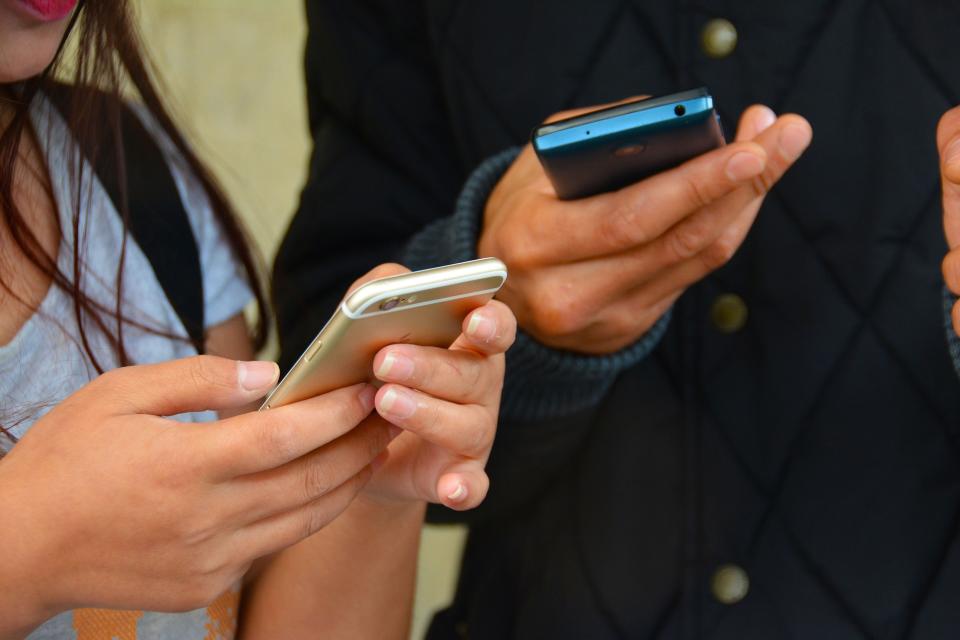Study: 1 in 5 American homes get broadband through smartphones

There’s about a one in five chance that you can’t read this at home on anything that won’t fit in your pocket — thanks to a surge in smartphone-only broadband use found by a new study.
The Pew Research Center’s latest survey reported that a full 20% of U.S. adults use a smartphone to get online but had no broadband at home — up dramatically from the 13% smartphone-only share that Washington nonprofit found in 2015.
One in five isn’t just a significant fraction. It’s also a significant factor that policy makers, tech companies and the users better identified as “citizens” should consider when we think about tech-policy issues, from net-neutrality regulations to the recently-proposed merger of Sprint (S) and T-Mobile (TMUS).
Cutting the cord
“It’s an amazing number, and it speaks to the power of smartphones to some degree,” said Lee Rainie, Pew’s director for internet and technology. “ It speaks to maybe tradeoffs people have to make as they consider what gadgets they can afford, and what gadgets will work for them.”
The share of Americans who have cut the broadband cord is even higher among younger users, those that make less than $30,000 a year and minorities:
28% of adults aged 18-29 are smartphone-only, versus 16% of those 50-64.
Among households making less than $30,000 a year, 31% were smartphone-only; for households making $75,000 and up, the figure was just 9%.
24% of African-American adults and 35% of Hispanic adults were smartphone-only, while only 14% of whites were.
In fewer words and numbers, the digital divide is real.
The study — based on phone interviews with 2,002 adults from Jan. 3 to Jan. 10 — also found that 15% of Americans had neither broadband nor a smartphone.
This study’s other key finding–also the one Pew played up in its headlines–is that the share of U.S. adults online who think the internet has been mostly a good thing for society has dropped to 70%. Four years ago—when we had a much more innocent attitude about social networks—that number was 76%.
Continued wireless weaknesses
Cost considerations have to drive much of this, Rainie said.
“The starting point for this is probably folks saying I need connectivity, I don’t have all the resources in the world for every kind, so what will serve me best?” he said. “You can only get one thing, for a lot of people it makes sense to have a smartphone.”
But even as LTE has steadily increased mobile-broadband speeds, a mobile-only online existence continues to conflict with sites, apps and services that work poorly or not at all on a smartphone’s smaller screen.
In fact, a 2016 Pew report called out just these issues. For instance, among Americans who had used a smartphone in a job search, 47% ran into content that didn’t display properly on their mobile devices, 38% had problems submitting files or documents needed for a job application and 37% ran into trouble entering “a large amount of text” on their phones.
(Having once had to finish up a story on my phone after my laptop’s battery died, I fully empathize with that last complaint.)
You can share a phone’s bandwidth with nearby computers via its mobile hotspot function, but all four nationwide wireless carriers impose data limits on the feature. T-Mobile (TMUS), however, sells a $25 add-on that removes such hotspot limit.
Besides, earlier research by Pew (funded mainly by the Philadelphia-based Pew Charitable Trusts) found that only 55% of smartphone-only users have a “real” computer at home anyway – for the other 45%, tethering isn’t an option. Among U.S. adults in general, 73% have a computer.
What this means for tech policy
The issue of whether you can or should count wireless broadband as a replacement for the wired sort has been raised before. In January, however, the FCC decided that “mobile services are not full substitutes for fixed services.”
But the Pew survey suggests that some Americans have decided — or at least grudgingly accepted — that mobile is a good-enough replacement.
,On one level, you can read that as a good thing. It means that the market for wireless broadband, defined this broadly, is much more competitive than it is for wired alone. Instead of the local cable company and the local phone company — often, only the cable company can deliver sufficiently fast speeds — you also have four fiercely competitive wireless carriers.
And wireless carriers, unlike wired broadband providers, are happy to let other firms resell their service under their own brands.
But those wireless carriers were also more aggressive than wired broadband providers in pushing the limits of the net-neutrality rules the FCC voted to erase last year.
And we might not have four wireless carriers to choose from, should the merger of Sprint and T-Mobile – a dreadful idea when it surfaced four years ago that seemed to have died last year — go through.
Federal regulators should already have plenty of reasons to look at this combination with skepticism, but when one in five Americans rely solely on mobile broadband, cutting their choice of networks from four to three can’t be something we just wave through.
More from Rob:
Email Rob at rob@robpegoraro.com; follow him on Twitter at @robpegoraro.

